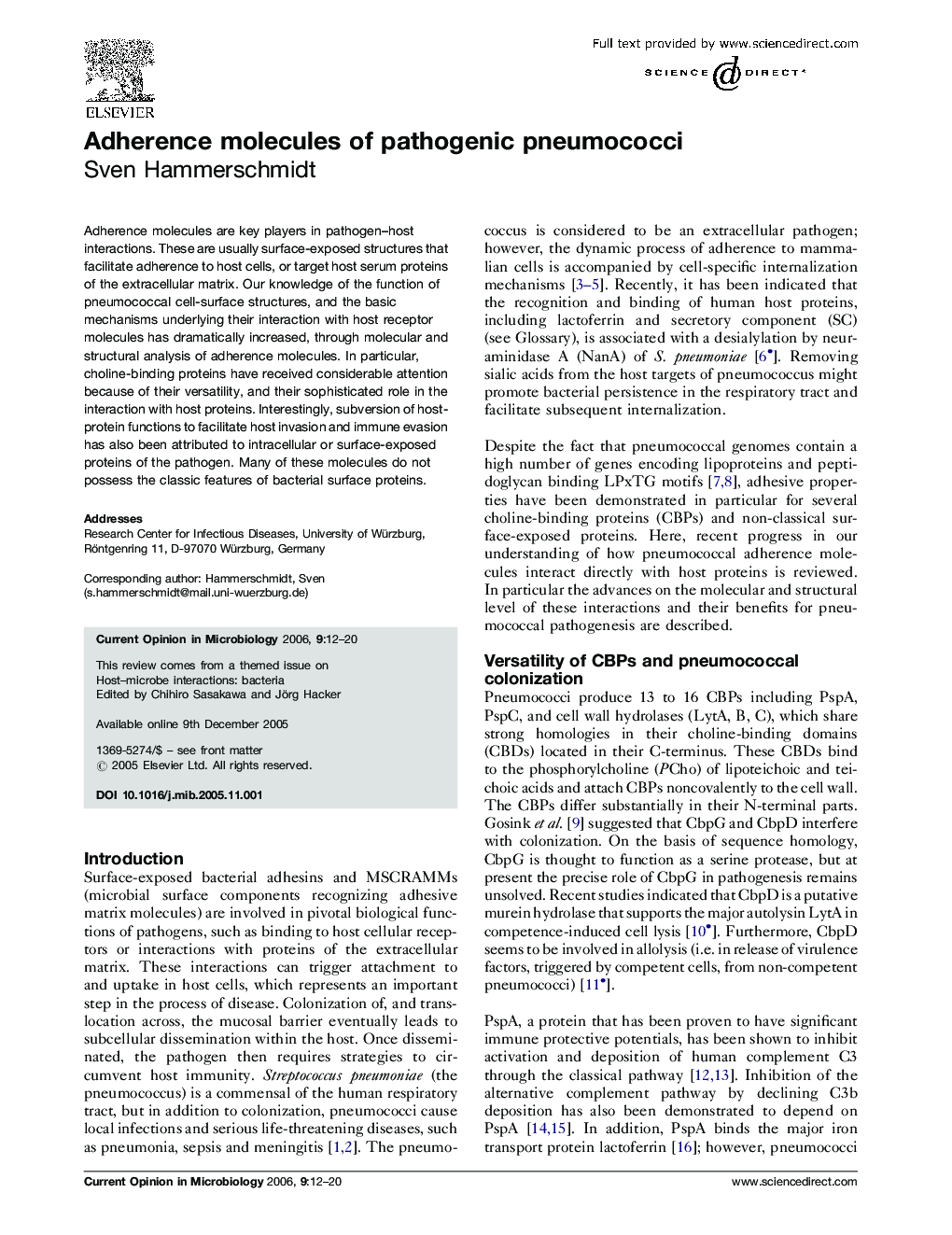| Article ID | Journal | Published Year | Pages | File Type |
|---|---|---|---|---|
| 3399775 | Current Opinion in Microbiology | 2006 | 9 Pages |
Adherence molecules are key players in pathogen–host interactions. These are usually surface-exposed structures that facilitate adherence to host cells, or target host serum proteins of the extracellular matrix. Our knowledge of the function of pneumococcal cell-surface structures, and the basic mechanisms underlying their interaction with host receptor molecules has dramatically increased, through molecular and structural analysis of adherence molecules. In particular, choline-binding proteins have received considerable attention because of their versatility, and their sophisticated role in the interaction with host proteins. Interestingly, subversion of host-protein functions to facilitate host invasion and immune evasion has also been attributed to intracellular or surface-exposed proteins of the pathogen. Many of these molecules do not possess the classic features of bacterial surface proteins.
